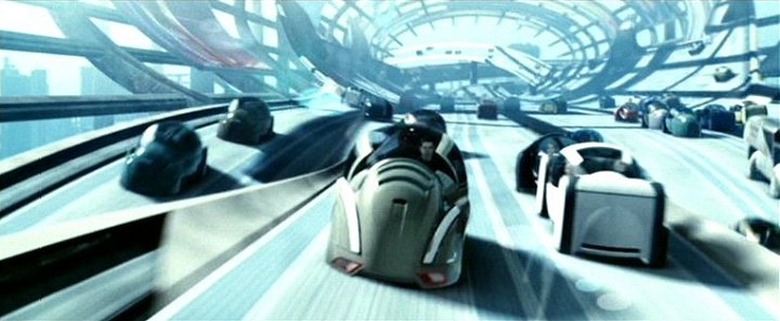MIT Thinks It Can Create A World Without Traffic Lights
In addition to increasing safety on the road, self-driving cars might help us achieve something else: speed up daily commutes by removing the need for stoplights. Rather than having humans obey the red, yellow and green lights, a central "nervous system" connecting all intersections with incoming autonomous cars would be able to easily direct traffic without worrying about accidents.
It might sound like a futuristic dream that won't be here for a few more years, but researchers from MIT have conceived a plan to eliminate all traffic lights without the need for self-driving cars.
DON'T MISS: 5 free apps for iPhone and Android that will actually change your life
Carlo Ratti (Senseable City Lab) and Paolo Santi (Ambient Mobility Lab) published a paper in the PLoS One journal explaining how a slot-based intersection would work.
Essentially, the nervous system metaphor mentioned before would be in control of some of the aspects related to driving a car even for cars that aren't autonomous. "In terms of what kind of technology you would need, you won't need to wait 20 years," Santi says. "We don't need autonomous driving. It's actually much simpler."
The system only needs sensors inside a car, and a communication method at the intersection. The system would be able to determine the direction the car intends to travel, whether it'll continue straight or take a turn, and will group the car with other cars heading in the same direction. Furthermore, the system would limit the speed of each group so that it can pass through the intersection at the same time without endangering other vehicles.
That's how the slot-based design works, a principle that's already employed for boarding aircraft – you may have seen it in place when flying Southwest.
"From a technological standpoint, there are no big hurdles to implement this idea," Santi said. The short YouTube above shows how such a system would work.
If a car is autonomous, then the procedure is even simpler since the driver would only sit idly by as the system takes him or her through each intersection. Overall, cars would drive slower through intersections, but they wouldn't wait as long as they do now so travel times would drop significantly.
However, the human problem still looms over this smart idea. On cars that are equipped just with the sensors required for this method to work, human drivers would still be a risk. Even though the system dictates cruising speed and the projected trajectory of a car, the driver would still be in control and mistakes can easily be made. By simply disobeying the speed limit or changing lanes when he or she isn't supposed to, a careless person could cause serious problems.
Even so, this MTI idea is actually rather smart, and might be put to good use in at least some cities in the future. The MIT team is already in negotiations with a few cities where the idea could be applied, though it's not clear which ones.
